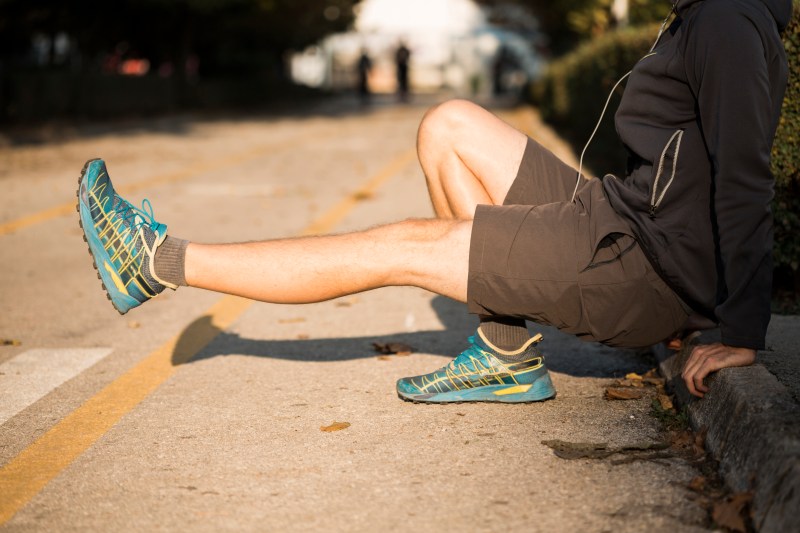If you are consistent with your running workouts, knowing how often to change running shoes is essential. A pair of shoes can make or break your training, as comfort, durability, and support can make all the difference. I learned this myself, as I had to try out a few different brands before finding one that really worked for me and made my runs even more enjoyable.
So, before you hit the treadmill or trail next, keep reading to discover when it’s time to get a new pair, warning signs to keep an eye out for, and how to make your shoes last longer!
How often should you change your running shoes?

According to an NIH study, “The recommended time for changing running shoes is every 500 miles.” However, some runners choose to switch them out as frequently as every 300 miles. This general range depends on a few factors, including the shoe model, how often you run, and the surfaces you run on. Lighter shoes made for racing or speed work may wear out more quickly than cushioned, high-mileage trainers, too.
If you run consistently throughout the week, it’s a good idea to track your mileage to estimate when you’re approaching that limit. You could use a running app or log to help monitor shoe usage; another approach would be writing the start date on the inside of your shoe as a simple reminder.
Even if your shoes still look fine on the outside, the midsole may be breaking down inside, which can affect comfort and support. By staying aware of your mileage, you can replace your shoes before problems arise and keep your training smooth and injury-free.
What affects the lifespan of your running shoes?

Several factors can influence how long your running shoes last, even if you’re using them regularly. One of the biggest is the type of surface you run on. Pavement and concrete are much harder on shoes than trails or treadmills, which provide more cushion and less impact.
Your running style also plays a role. If you have an uneven gait, overpronate, or strike heavily with your heel, your shoes may wear out faster in specific areas. Shoe quality matters too — premium shoes often have more durable materials and cushioning than budget options.
Additionally, your body weight and the intensity of your runs can affect how quickly your shoes break down. Heavier runners and those doing a lot of speed work or hill training may compress the cushioning more quickly. You also want to take climate and storage conditions (like leaving shoes in a hot car) into consideration, as these may cause the materials within your shoes to break down faster.
Warning signs your running shoes need replacing

Worn-out treads
If the outsole (bottom) of your running shoes has smooth or bald spots, especially in high-impact areas, it’s a sign that the grip and traction are compromised.
Flattened cushioning
When the midsole no longer feels springy or responsive, your shoes may have lost their shock absorption. If your feet feel sore after easy runs, the cushioning could be worn out.
Uneven wear
Look at the soles and heel area for asymmetrical wear patterns. This can indicate the shoe no longer supports your natural stride properly.
New aches and pains
Unexpected discomfort in your feet, knees, or hips during or after a run can be caused by shoes that no longer provide proper support.
Creasing or compression lines
Deep creases in the midsole foam or a visibly compressed heel can signal that the shoe’s structure has broken down, even if the upper part still looks fine.
Tips to make your running shoes last longer

- Rotate between pairs: Using two pairs of running shoes gives each one time to decompress between runs, which helps preserve the cushioning and structure.
- Wear them only for running: Avoid using your running shoes for errands, gym workouts, or daily wear. Extra use adds unnecessary mileage and speeds up wear.
- Let them dry naturally: After wet or sweaty runs, remove the insoles and let your shoes air out. Avoid putting them in the dryer or near direct heat.
- Clean them gently: Use a soft brush and mild soap to clean off dirt and mud. Don’t machine wash your shoes — it can damage the materials.
- Store them properly: Keep your shoes away from direct sunlight and out of extreme temperatures, and opt for a dry, cool place that will prevent degradation of the foam and glue.
Frequently asked questions

Why do running shoes only last 500 miles?
Running shoes typically last around 500 miles because the cushioning and support materials, especially the midsole foam, break down over time. Repeated impact compresses these components, reducing shock absorption and stability. Even if the shoes look fine, worn-out interiors can increase the risk of discomfort, poor performance, and injury.
How often should I replace HOKAs?
You should replace your HOKAs every 300 to 500 miles, depending on the model, your running style, and terrain. Max-cushioned HOKAs may feel comfortable longer, but the midsole still compresses over time. Track your mileage and watch for signs of wear, such as reduced bounce or new aches.
What is the life expectancy of Brooks running shoes?
The life expectancy of Brooks running shoes is typically 300 to 500 miles, like other shoe brands. This varies based on the specific model, running surface, and individual stride. Regular runners may need a new pair every few months, while occasional runners might get a longer lifespan with proper care and rotation.




